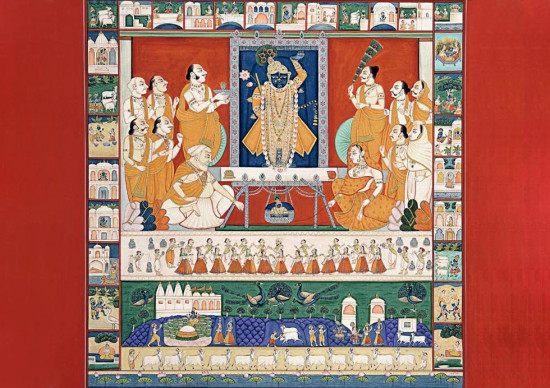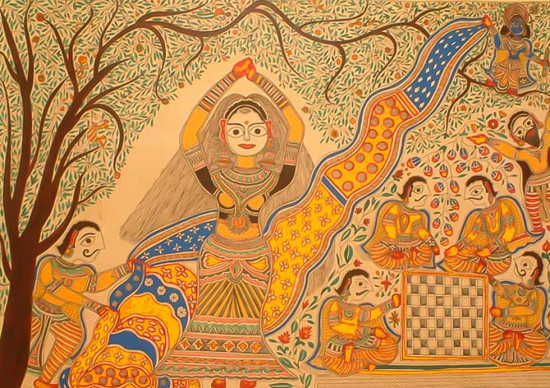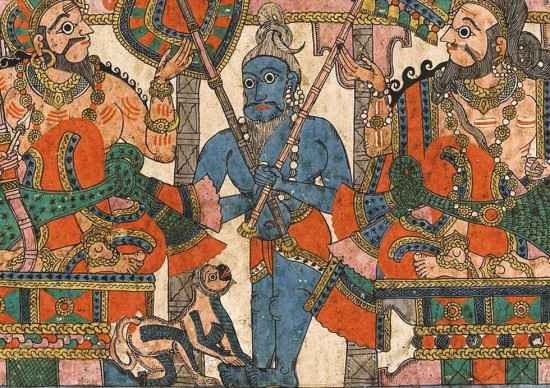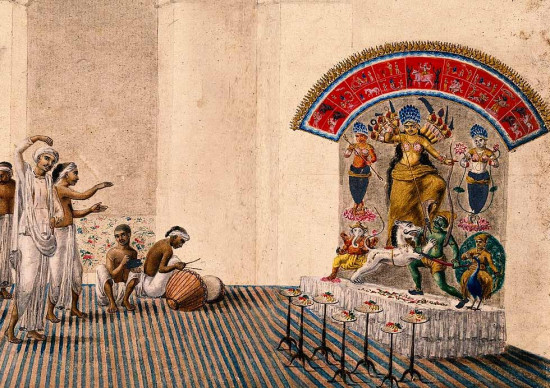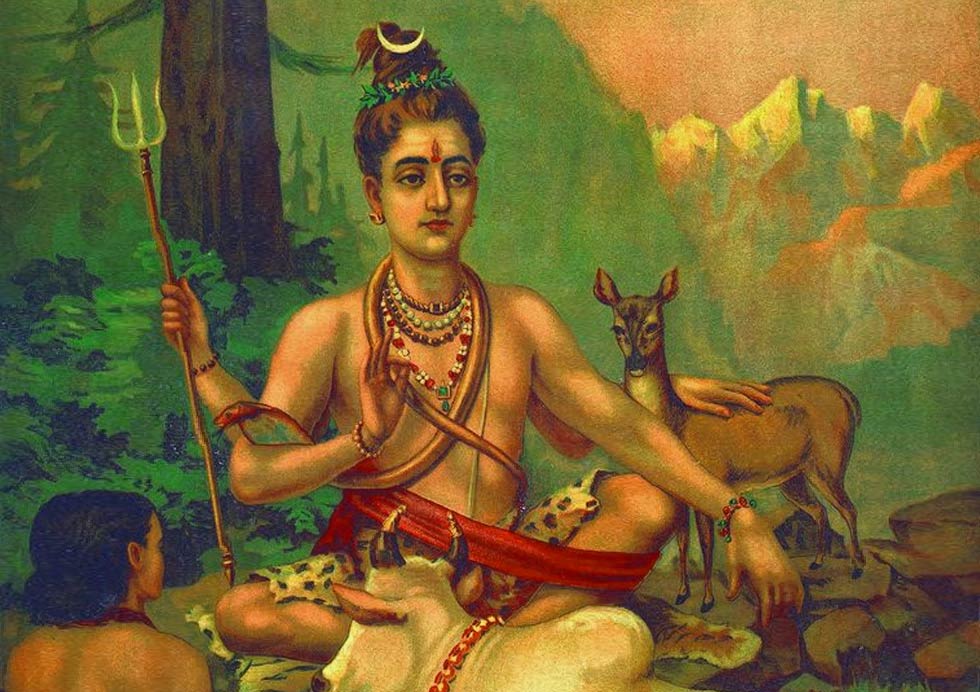
The moon on Shiva’s head represents a host of cosmic principles, including the cycles of time, spiritual awakening, selfless sacrifice, and divine grace.
अयं चन्द्रः सर्वेषां भूतानां मधु, अस्य चन्द्रस्य सर्वाणि भूतानि मधु : यश्चायमस्मिंश्चन्द्रे तेजोमयोऽमृतमयः पुरुषः, यश्चायमध्यात्मं मानसस्तेजोमयोऽमृतमयः पुरुषः, अयमेव स योऽयमात्मा ; इदममृतम्, इदं ब्रह्म, इदं सर्वम् ॥ ७ ॥ 7.
This moon represents the essence (or "honey") of all beings, and in turn, all beings are nourished by the essence of the moon. Similarly, the eternal, radiant being within the moon, as well as the eternal, radiant being that resides in the mind and body, are both one with this essence. These four aspects are ultimately the same as the Self. The understanding of this Self leads to immortality; this fundamental unity is what we call Brahman. Knowledge of Brahman is the key to realizing oneness with all.

The story of moon adoring lord shiva’s hair

Prajapati Daksha, in his anger, advised Chandradev to treat all his wives equally. But when Chandradev ignored this advice, Daksha, feeling disrespected, placed a curse on him. He declared that Chandradev would lose his radiance, and over time, he would begin to fade away.
As a mark of his protection and grace, Lord Shiva placed the crescent moon on his own head, symbolizing the balance between waxing and waning, light and dark.
In another version of the story, it is said that after the curse, Chandradev took shelter in the ocean. His absence caused a great imbalance in the universe, disturbing the natural order. Concerned, the devas (gods) asked Lord Shiva to help restore harmony. Compassionate as ever, Lord Shiva allowed Chandradev to take refuge in his matted hair. This act of grace helped the moon regain its size for 15 days, but to honor Daksha’s curse, the moon would also diminish for the next 15 days, creating the cycle of the full moon and the new moon that we see today.
Shiva and the Crescent Moon in Indian Art

The First Depictions of Shiva with the Crescent Moon
The earliest known representations of Lord Shiva with the crescent moon appear in ancient sculptures and carvings from the Gupta period (circa 4th–6th centuries CE), often regarded as a golden age for Indian art and culture. The Gupta period marked a time when Hindu iconography began to solidify and mature, and many of the iconic depictions of deities were standardized in temple art and sculptures.
- Early Sculpture Depictions: The crescents on Shiva’s head are first clearly visible in stone reliefs and sculptures found in temples, especially those dating back to the Gupta period. For instance, in sculptures at Udayagiri Caves (near Bhopal, Madhya Pradesh), we find early depictions of Shiva with a matted hair and a crescent moon, a sign of the god’s cosmic power and his role as the destroyer and regenerating force in the universe. These early depictions emphasize Shiva as the Lord of the Universe, ruling over all cosmic forces.
- Iconography Evolution: As time passed, the image of Lord Shiva with the crescent moon became more prominent in Hindu art, particularly during the Chola period (9th to 13th century CE) and later under various regional dynasties. The crescent moon began to symbolize not only Shiva's cosmic function but also his divine grace, as it appeared in bronze statues, temple carvings, and even paintings. Over the centuries, these artworks became increasingly elaborate, with the crescent moon often positioned in contrast to the powerful and intense features of Shiva’s face, representing both calm and destruction.
Symbolic Significance of the Crescent Moon in Art

2.Spiritual Significance: Over time, the crescent moon also came to represent spiritual awakening. In some early paintings and sculptures, the moon was seen as a symbol of the mind and emotions, often representing the beginning of spiritual transformation. The small crescent moon could symbolize the early stage of the devotee's spiritual journey, with the full moon representing spiritual enlightenment. In this sense, the moon’s phases in art began to reflect not only the cosmic but also the individual spiritual path.
3.Depictions in Tantric Art: The crescent moon also plays a significant role in Tantric art, where Shiva is often depicted as the Lord of the Universe, embracing both the masculine and feminine principles. In some Tantric traditions, the crescent moon was considered a symbol of the Shakti, or divine feminine energy, that resides within Lord Shiva. This imagery is deeply connected to Shiva’s role as the balance of opposites, the union of the masculine (Shiva) and feminine (Parvati or Shakti) forces in the cosmos.
Regional and Artistic Variations
The crescent moon’s association with Shiva evolved and took on different artistic styles across India’s regional traditions. For example:
- Chola Bronzes (9th to 13th Century): The Chola Dynasty, known for its mastery of bronze sculpture, produced exquisite representations of Shiva Nataraja (the Lord of Dance), where the crescent moon was often depicted in Shiva’s matted hair, radiating serenity amidst his cosmic dance of creation and destruction. These sculptures, often cast in bronze, highlight Shiva’s eternal rhythm and the centrality of the moon in his divine energy.
- Mughal and Rajput Paintings (16th to 19th Century): In the later Mughal and Rajput paintings, Lord Shiva’s image continued to evolve. Artists started depicting him more artistically, with intricate details of his matted hair, the crescent moon shining bright against the dark skies of destruction. In these works, Shiva is not only a cosmic force but also a meditative ascetic, his calm demeanor enhanced by the subtle presence of the crescent moon.
The Crescent Moon as a Symbol of Grace and Protection
In the Tantric traditions, where Shiva's divine dance of creation and destruction is central, the crescent moon represents spiritual purity, helping the devotee transcend worldly desires and achieve spiritual liberation. The moon's serene glow, juxtaposed against the intensity of Shiva's cosmic dance, symbolizes the divine light of wisdom and the awakening of higher consciousness.
The Timeless Symbolism of Shiva and the Crescent Moon
As artists continue to depict Lord Shiva in various forms, the crescent moon remains a powerful and timeless symbol of divine protection, spiritual awakening, and the eternal flow of time. It is through this moon that devotees are reminded of Shiva’s omnipresence and his role in maintaining the cosmic order, offering a beacon of light and wisdom in the vast expanse of the universe.

